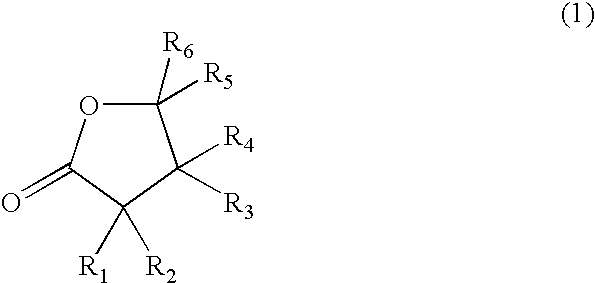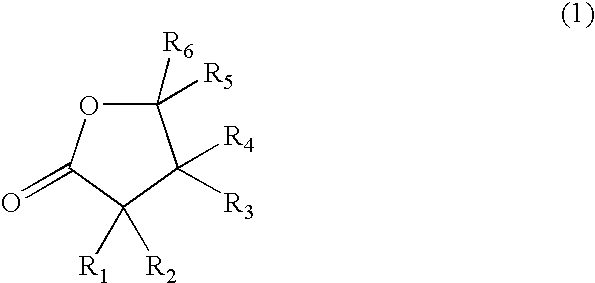Process for organosolv pulping and use of a gamma lactone in a solvent for organosolv pulping
a technology of organosolv and solvent, which is applied in pulp properties modification, papermaking, textiles and papermaking, etc., can solve the problems of large mineral waste stream containing harmful components and need relatively high operating pressure, and achieve low pressure and high boiling point
- Summary
- Abstract
- Description
- Claims
- Application Information
AI Technical Summary
Benefits of technology
Problems solved by technology
Method used
Image
Examples
examples
[0037] The process according to the invention will be further illustrated by means of the following non-limiting examples.
examples 1 to 5
[0038] Approximately 4 grams of dried birchwood (Betula ssp.) sawdust having a cellulose content of 49 wt % was weighted into the reactor tube of a plug flow reactor. Solvent was continuously supplied to and discharged from the reactor tube at a liquid hourly velocity of 8 litre per kg wood per hour. The reactor pressure was kept at 4 bar (absolute). During the first hour, the solvent was heated from room temperature to the reaction temperature, then the temperature was maintained for one hour at the reaction temperature and then the solvent was cooled from reaction temperature to room temperature. After cooling, the solvent supply was stopped and acetone was supplied to the reactor to remove remaining liquid from the solid residue. The acetone-washed residue was dried by purging it overnight with nitrogen, removed from the reactor, and weighed.
[0039] During all experiments, a dark liquid fraction was discharged from the reactor tube and the acetone-washed residue obtained, i.e. th...
PUM
| Property | Measurement | Unit |
|---|---|---|
| temperature | aaaaa | aaaaa |
| wt % | aaaaa | aaaaa |
| pKa | aaaaa | aaaaa |
Abstract
Description
Claims
Application Information
 Login to View More
Login to View More - R&D
- Intellectual Property
- Life Sciences
- Materials
- Tech Scout
- Unparalleled Data Quality
- Higher Quality Content
- 60% Fewer Hallucinations
Browse by: Latest US Patents, China's latest patents, Technical Efficacy Thesaurus, Application Domain, Technology Topic, Popular Technical Reports.
© 2025 PatSnap. All rights reserved.Legal|Privacy policy|Modern Slavery Act Transparency Statement|Sitemap|About US| Contact US: help@patsnap.com



